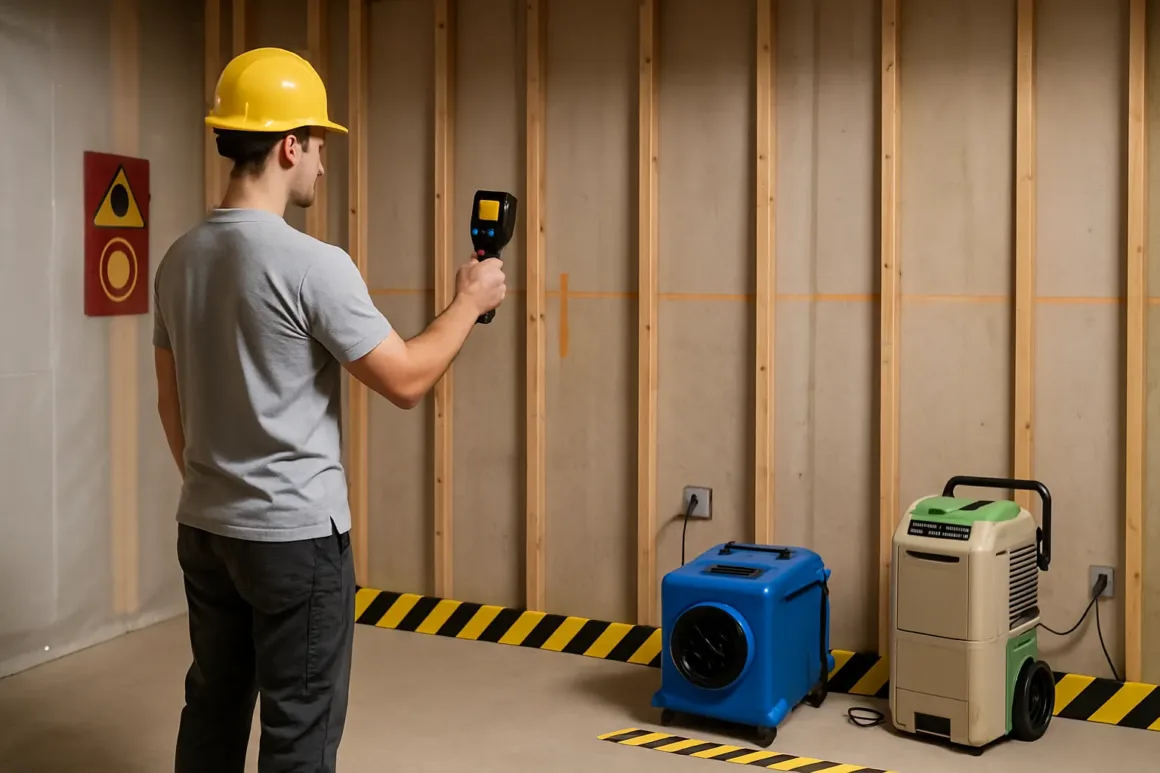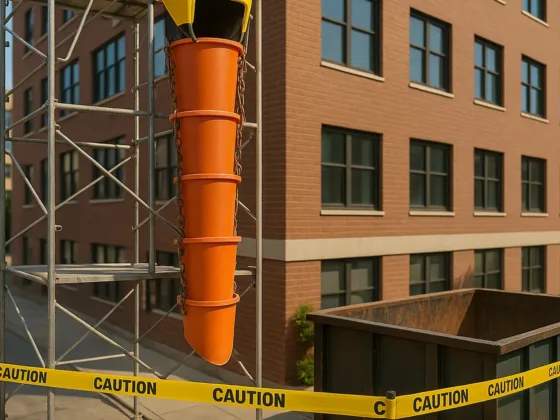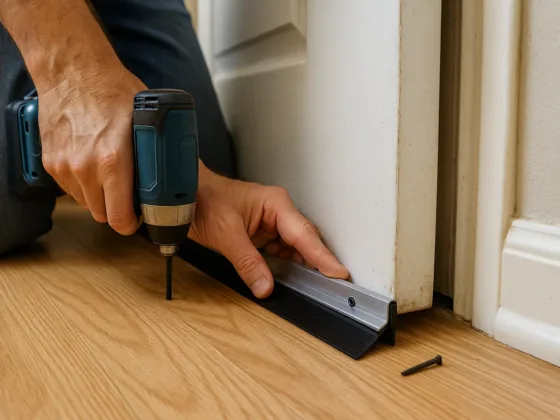Table of Contents Show
By: Perla Irish · Reviewed by: Lee Senter, IICRC Approved Instructor
Last updated: October 7, 2025
About the reviewer
Lee Senter, IICRC Approved Instructor, is an industry trainer in cleaning and restoration based in Toronto.
Life in Toronto moves fast—and home emergencies do, too. A burst pipe after a freeze, a smoky flare-up on the stove: what you do in the first 24–72 hours sets the tone for the whole recovery. This guide shows the exact steps and benchmarks local pros use—so you can stabilize quickly, dry down correctly, and get back to normal with fewer surprises. For broader water-damage background, see what to do when water damage is ruining your home.
What Toronto Homeowners Need After a Disaster — The Short Version
- Stabilize hazards first, shut off water, gas, and electric as appropriate, and confirm structural safety. For burst pipes, follow Burst Pipe: Quick Steps.
- Document everything with room-by-room photos and video before moving items.
- Map moisture and smoke to find hidden wet zones and invisible soot that cause long-term damage. If your basement is affected, review water in the basement after rain or flood.
- Use professional extraction, drying, and air cleaning with commercial-grade dehumidifiers, HEPA scrubbers, and proven odour neutralization.
- Coordinate with insurance using a clear scope, line-item estimates, and a contents inventory.
Competitor guides often skip precise drying targets, discard-versus-salvage rules, the correct deodorization sequence, and insurer-ready documentation. You’ll find all of that below.
Fire Damage: The First 24 to 72 Hours
0 to 24 Hours
- Do a safety sweep and verify utilities, structural integrity, and air quality.
- Contain soot by closing off unaffected rooms and running HEPA air scrubbers to capture fine particulates.
- Identify residues—dry soot that wipes clean and wet or oily soot that smears and needs specialty agents.
- Prep for deodorization with thorough pre-cleaning and ventilation before ozone or hydroxyl treatment. For prevention ideas, see five ways to fireproof your home and our explainer on flashover.
24 to 72 Hours
- Prioritize source removal over masking by cleaning or replacing charred materials, then treat air and surfaces.
- Use a triple-pass cleaning sequence from ceilings to walls to contents and finish with a detailed wipe-down and negative air.
- Send textiles and soft goods to a restoration laundry to avoid setting odours.
Pros track measurable benchmarks: sustained improvement on particle-counter readings before demobilizing HEPA units and zero rebound odour 24–48 hours after equipment removal. For indoor-air context, see breathing easier indoors.
Flood and Water Damage: Step by Step
- Confirm safety and categorize the water source as clean, grey, or black with the right protections.
- Pump out standing water using high-lift extractors; squeegee wands help on slab foundations common in many Toronto basements.
- Map hidden moisture with a thermal camera and a pin or probe meter—sill plates, subfloors, and the base of interior walls.
- Dry with intent: calculate air mover–to–dehumidifier ratios, build a drying chamber, and remove baseboards to ventilate wall voids.
- Use selective demolition only where materials can’t reach dry-standard targets.
- Apply antimicrobial solutions when indicated after extraction and before full drying.
- Monitor daily and log temperature, relative humidity, grain depression, and material moisture percentages until pre-loss equilibrium. In a good chamber, aim for RH ~40–50% with steady grain-depression drops day over day. For prevention and value, review benefits of basement waterproofing and this DIY basement wall membrane guide.
- Begin build-back only after verifying dryness with logs that meet regional baselines.
For broader preparedness, see our checklist to flood-proof your home and tips for spotting leaks behind gutters.
What to Toss and What to Save
- Discard porous materials contaminated by sewage or black water such as carpet pad, insulation, and MDF baseboards.
- Consider salvaging hardwood, tile over slab, and solid wood furniture if dried quickly.
- Evaluate electronics only after full dry-down since corrosion risk rises with time.
Odour Removal That Works
- Remove sources such as char and residues.
- Deep-clean ceilings, walls, and contents.
- Run HEPA air scrubbers continuously during cleaning.
- Use advanced odour neutralization such as ozone or hydroxyl only after cleaning.
Insurance and Paperwork — Toronto Homeowner Checklist
- Before work, request a written scope of work, estimated drying days, and an equipment list.
- During work, collect daily moisture logs and photos and document any change orders in writing.
- For contents, separate salvageable and non-salvageable items with photos and serial numbers where possible.
- After work, request a final moisture report and a Certificate of Completion.
Pro tip: ask for room-by-room moisture logs and end-of-job dry-standard proof. For commercial contexts, see handling commercial water damage.
Prevention for Toronto Homes
- Test sump pumps and battery backups every year and replace batteries proactively.
- Install and maintain backwater valves and window well covers.
- Clean gutters and downspouts seasonally and correct grading so water flows away from the foundation.
- Improve kitchen fire safety with stovetop extinguishing canisters and a Class K extinguisher. Explore automatic opening vent systems and disaster-resilient home design.
Transparent Timeline
- Emergency response within one to four hours, available 24/7
- Water extraction and stabilization on day zero
- Drying window typically three to five days, longer for multi-layer assemblies
- Deodorization and detail cleaning for fire incidents two to five days depending on severity
- Build-back duration varies based on materials and permits
Homeowner Tools and Targets — Printable Checklist
- Utilities isolated and safe
- Pre-work photos and video captured
- Scope and equipment list received
- Daily logs recorded for temperature, relative humidity, grain depression, and material moisture percentages
- Hidden cavities opened and verified dry
- Final moisture report and completion letter filed
Local Toronto Service Links
The process of flood cleanup Toronto can dry out a home within days and helps prevent mold and material decay. A qualified Toronto restoration company coordinates with insurers so you can focus on getting life back to normal.
Call a Qualified Toronto Restoration Team
When every hour counts, choose a team that offers 24/7 emergency response, moisture mapping, HEPA filtration, and full insurance coordination to get you home faster and safer.
FAQ
How fast should I act after a flood?
Within 24 hours. Stabilize, begin moisture mapping, then set dehumidification and directed airflow as soon as it’s safe.
Can household fans dry a basement?
No. Effective drying requires dehumidification and calculated air mover placement; household fans can drive moisture into assemblies.
What materials usually need to be discarded?
Porous items impacted by black water such as carpet pad, insulation, and MDF trim. Solid wood and tile may be salvageable if dried quickly.
Do I need air testing after a kitchen fire?
Run HEPA filtration during cleaning and confirm no particulate or odour rebound 24–48 hours after equipment removal.
Will insurance cover this?
Many policies cover sudden and accidental losses. Keep daily moisture logs, photos, a scope of work, and a completion letter to support your claim.








